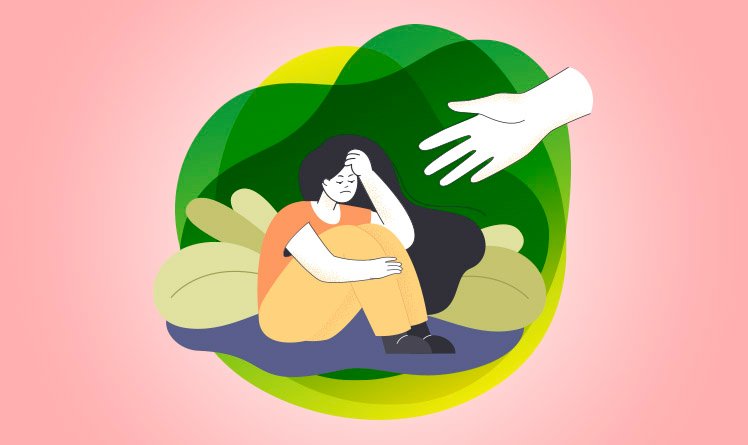Do you have an emotional block? Learn how to identify and deal with it consciously and definitively.

|
Getting your Trinity Audio player ready...
|
Have you ever felt like something invisible is holding you back? That, even with all the tools and information at your fingertips, there's an emotional brake sabotaging your plans? If so, maybe it's called emotional blockage.But know that you are not alone.
In this comprehensive article, we'll explore in depth what an emotional block is, how it forms, the most common signs, the consequences for your life—and, most importantly, how to treat it effectively. We'll discuss therapies such as NLP, mindfulness, and positive psychology, and how to begin your emotional reprogramming in practice. So, let's dive in!
What is emotional blockage?
Emotional blockage is an unconscious defense mechanism that prevents you from feeling or expressing certain emotions. In this sense, it functions as an internal barrier that keeps you from situations or feelings considered "dangerous"—even if you rationally know there's no real danger.
These blocks are built throughout life, usually in childhood, as a form of protection. However, over time, they cease to be useful and begin to limit growth, relationships, and emotional well-being.
“Emotional blockage is an unconscious mechanism that prevents the free expression of emotions, creating internal barriers that limit actions, decisions and relationships.”
How it is formed: from childhood to the present day
Imagine you were rejected as a child—and it hurt deeply. So, your brain registered this pain and, to prevent it from happening again, created a kind of emotional "wall." This wall prevents you from exposing yourself again. However, a problem arises. After all, this same wall also blocks true connections, professional opportunities, and meaningful experiences.
Over the years, we accumulate experiences that reinforce these blocks, such as criticism, trauma, failures, and even toxic family patterns. The result? Adults who are emotionally blocked, with low self-esteem, difficulty making decisions, and a constant feeling of not being good enough.
“Emotional blocks are often formed in childhood as a response to situations of pain, criticism, or rejection, and remain active into adulthood as unconscious patterns.”
Signs that you have an emotional block
It's not always easy to identify an emotional block. After all, it operates unconsciously. But there are warning signs:
- Difficulty expressing feelings clearly;
- Irrational fear of rejection or failure;
- Constant self-sabotage in relationships or in the career;
- Controlling or perfectionist behavior;
- Feeling of always being “stuck” or “paralyzed” when faced with opportunities;
- Emotional outbursts that seem disproportionate;
- Difficulty trusting people or opening up emotionally;
- Mental fatigue even without excessive physical exertion.
If you recognize yourself in these symptoms, this article is for you.
“Difficulty expressing yourself, fear of judgment, self-sabotage, and recurring feelings of inadequacy are indicative of emotional blocks.”
The impact of emotional blocks on your personal and professional life
Emotional blockages don't just affect your emotions. On the contrary, they compromise your life as a whole. In romantic relationships, they can cause withdrawal, jealousy, insecurity, or dependence. At work, they manifest as procrastination, fear of self-expression, lack of creativity, or resistance to change.
What's more, emotional blocks fuel states like anxiety, sadness, anger, and frustration. This way, it's like driving with the handbrake on—it consumes energy, causes wear and tear, and prevents you from getting where you really want to go.
Limiting beliefs and self-sabotage: the duo that reinforces blockages
Most emotional blocks are sustained by limiting beliefs, such as:
- “I'm not good enough.”
- “I don’t deserve to be happy.”
- “Love hurts.”
- “If I try, I will fail.”
These beliefs act as absolute truths that shape your behavior and choices. And even if you want to change, you end up repeating unconscious patterns that keep you in the same place. It's the famous self-sabotage: you want to move forward, but something inside you holds you back.
The neuroscience behind emotional blocks
Thanks to neuroscience, we now know that our brains are shaped by experiences. We call this neuroplasticity. Thus, the more we repeat a pattern—such as fear of rejection or need for approval—the stronger the neural connections related to that pattern become.
However, the brain can also be reprogrammed. New experiences, combined with techniques such as mindfulness, NLP and positive psychology, help create healthier connections aligned with the life you want to live.
“Our brains learn through repetition, and negative emotional patterns are also learned—but they can be unlearned through new experiences.”
Is there a cure for emotional blockages? What are the ways to treat them?
Yes, emotional blocks they can be treated. While there's no magic pill, there are several effective ways. It all starts with self-awareness—that is, recognizing that the blockage exists and that it does not define who you are.
From there, you can choose the best treatment for your case:
- Traditional therapy (such as psychotherapy or Cognitive-Behavioral Therapy – TCC);
- Integrative therapies, such as family constellationFamily Constellation: what it is, how it works and how it can help you on your journey of self-discovery or body therapy;
- Neuro-Linguistic Programming (NLP), which acts directly on the reformulation of beliefs;
- Mindfulness, to deal with emotions consciously;
- Positive psychology, to strengthen your internal resources.
The key is in the combination of techniques that work the body, mind and emotions — in a practical, structured and personalized way.
"Emotional blockages can be treated, and involve practices such as therapy, NLP, mindfulness, and positive psychology—with progressive and sustainable results."
How to identify your own emotional blocks
THE self-knowledge is the first step to transformation. Some questions can help you identify blocks:
- What situations cause me to overreact emotionally?
- What patterns do I repeat in my relationships?
- What kind of criticism hits me deeply?
- What stops me from taking action, even when I know what needs to be done?
These reflections, combined with mindfulness practice, allow you to access what's hidden in your subconscious and, ultimately, begin to reframe things.
Effective treatments and techniques to unlock emotions
Mindfulness
Practicing mindfulness helps you notice emotions as they arise, without judgment. Consequently, this allows you to avoid reacting impulsively, consciously choosing how to deal with each situation. Studies show that mindfulness reduces the activity of amygdala (fear center) and increases emotional resilience.
Positive Psychology
Rather than focusing on what is “broken,” Positive Psychology is an approach that strengthens what is working: your strengths, virtues, values and potentials. Thus, with techniques of gratitude, positive visualization and goal setting, it takes you out of victim mode and repositions you as the protagonist of your own story.
NLP – Neurolinguistic Programming
NLP works directly on the mental patterns that fuel blockages. With it, you learn to:
- Reprogram limiting beliefs;
- Change the way you relive traumatic memories;
- Redirect your focus to more productive mental states;
- Create new emotional strategies based on internal and external language.
Traditional and integrative therapy
Psychotherapy is a great ally in unlocking emotions, especially when blockages are deeply rooted or associated with trauma. Similarly, integrative therapies, such as floral remedies, acupuncture, or bioenergetics, work on the body and emotional energy—and can be excellent complements.
Mental reprogramming coaching
Mindset-focused coaching addresses practical goals and objectives, but also helps to reshape beliefs and attitudes. Therefore, it's ideal for those seeking visible, short-term results with a focus on action.
How to start your emotional reprogramming in practice
You can start now. Seriously. Emotional reprogramming doesn't have to wait for the "perfect Monday." But be careful: it's not just about repeating positive phrases—it's a process that involves presence, intention, and conscious practice.
“Reprogramming the mind is possible and begins by recognizing limiting patterns, cultivating new beliefs, and practicing healthier emotional habits.”
Below, see an expanded step-by-step guide with strategies that integrate body, mind, and emotion:
1. 3-minute meditation with conscious breathing
Sit with your spine straight and bring your attention to your breathing. Observe the air coming in and out through your nostrils. Whenever you notice your mind wandering, simply return to it gently, without stress or pressure. This small exercise, done daily, helps calm the mind, access the present, and create internal space for deeper changes.
2. Journaling structured emotional
Set aside 5 to 10 minutes of your day to write about how you're feeling. Start by answering questions like: "What bothered me today?", "What thought kept repeating in my head?", "Does this emotion have a more ancient origin?"
Write without a filter, but with curiosity. If possible, read it later as if it were a letter from someone asking for help. This distance helps you see unconscious patterns.
3. Reframing exercise with NLP (Swish Technique)
Think of a scene or thought that creates blockage or fear (e.g., public speaking, rejection, failure). Then visualize that scene as an image or movie. Give it color, sound, and sensation.
Now, imagine a new image that represents the desired state (confidence, lightness, clarity). Finally, with your eyes closed, mentally "push" the negative image away and bring the positive image forward at high speed until it occupies all of your mental space. Repeat 5 to 7 times.
4. Affirmations based on transformed belief
Choose one limiting belief at a time. Instead of simply denying it, create a believable transition sentence. For example:
- Limiting belief: “I’m not good enough.”
- Empowering Affirmation: “I am learning to recognize my worth and grow every day.”
Say this phrase out loud, looking into your eyes in the mirror. Make it part of your internal dialogue daily.
5. Body-mind integration with conscious movements
Our bodies store emotional memories. Therefore, conscious movement—through slow stretching, free dancing, or yoga—helps release accumulated tension that reinforces blockages. Combine movement with deep breathing and be present in each gesture, practicing mindfulness.
These practices, when done consistently, gradually unlock the mental and emotional patterns that limit you. And most importantly, they put you in control of your own emotional transformation.
What to avoid when trying to overcome emotional blocks on your own
- Ignoring the problem thinking it will go away on its own;
- Self-judgment for having “wrong” feelings;
- Search for magic formulas or instant solutions;
- Social isolation;
- Attachment to old patterns out of fear of the new.
The process can be challenging, but it's also liberating. The more committed you are to your transformation, the smoother the path becomes.
Conclusion: What changes when you free yourself from blockages
Living without emotional blocks doesn't mean not feeling fear, pain, or sadness. It means not be dominated by them. In other words, it means having the emotional freedom to make choices that are aligned with who you truly are.
So, when you unlock your emotions, you reconnect with your authenticity, regain your self-confidence, improve your relationships, and live with more lightness, focus, and purpose.
And the first step can be now.
How about taking the first step to reprogram your mindset and unlock your emotions?
Download the free eBook “Reprogram Your Mindset: Identify Your Blockages and Start Your Transformation” now. and discover practical techniques from NLP, positive psychology, neuroscience, and mindfulness to create a new story for your life.
FAQ – Frequently asked questions about emotional blockage
1. How do I know if I have an emotional block?
Notice recurring patterns of self-sabotage, fear of self-expression, or difficulty expressing emotions. These are common signs of blockages.
2. Can emotional blocks cause physical illnesses?
Yes. Repressed emotions and chronic emotional stress can affect the immune system and manifest in physical symptoms such as pain, insomnia, and fatigue.
3. Is it possible to treat emotional blockages on your own?
Yes. You can start the process with practices like journaling, mindfulness and positive affirmations. However, in more serious cases, it is recommended to seek professional help.
4. Does NLP really help overcome emotional blocks?
Yes. NLP offers straightforward techniques for reprogramming mental patterns and transforming limiting beliefs that sustain blockages.
5. How long does it take to unlock emotions?
It depends on the depth of the blockage and your commitment to the process. Some people feel improvement in a few weeks; others need months of practice and follow-up.
This article is part of the Mindset Reprogrammed project — a movement to awaken the power of the mind and transform lives from the inside out.
Image: Freepik

Marcel Castilho is an expert in neuromarketing, neuroscience, mindfulness and positive psychology. In addition to being an advertiser, he also has a Master's degree in NLP – Neurolinguistic Programming. As the owner and founder of the communications agency VeroCom and also of the digital agency Vero Contents, he has been studying human behavior for over 30 years.

